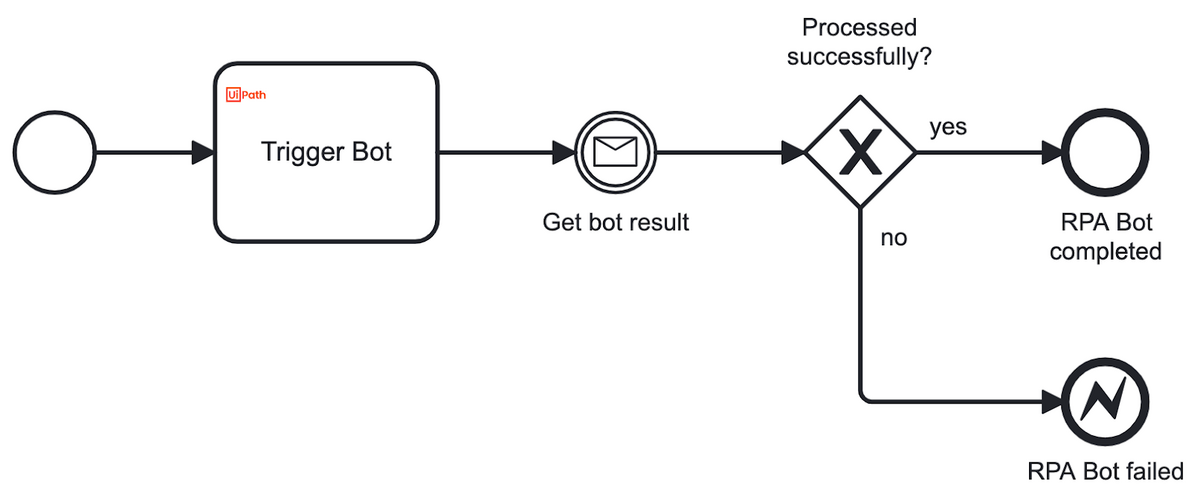We recently launched inbound Connectors that make it easy for you to trigger actions in Camunda Platform from third-party systems. Inbound Connectors allow your processes to receive data or messages from the other software tools that execute tasks throughout your organization.
We initially implemented support for inbound webhook Connectors on BPMN Start Events, which you can use to start a process instance in Camunda Platform when something happens in another system. Now, we’re excited to announce support for inbound webhook Connectors on Intermediate Events.
An Intermediate Event represents an occurrence or a change of state in a business process; that is, it’s a point in a process where something happens or where a specific condition is met, influencing the flow. For example, a Message Intermediate Event indicates that a specific message has been received or needs to be sent so that the process can interact with external systems or other process instances. When you use an inbound webhook Connector in place of a general-purpose Intermediate Event, you can greatly streamline interaction with other systems. Let’s look at an example.
A few months ago, we shared a sample process that shows how you can use BPMN and the UiPath Connector to orchestrate RPA bots as part of an end-to-end business process in Camunda Platform. That sample includes a subprocess that polls a UiPath bot every ten seconds, waiting for a result.

While this loop is relatively easy to model in BPMN, it can be cumbersome to build many times over for processes that involve multiple RPA bots and other external systems.

Using an inbound webhook Connector streamlines the process, reducing the amount of modeling work you have to do and making the diagram easier to read. More importantly, it makes the process less error-prone. The controlling system – in this case, UiPath – reports back to Camunda Platform, so there’s no need to configure a polling interval. You avoid a situation where the polling interval leads to an error if there’s a delay in the response from UiPath. Removing the polling interval also reduces load on the system.
In the example above, the Connector receives data from the RPA bot in a payload that you’ll be able to see in Operate. You now have the option to enhance the process by adding different branches that will be taken based on the payload. For example, if the bot returns status code 401 (unauthorized), you can use the Slack Connector to immediately send a message to an internal tech support channel.
As another simple example, you can use an inbound webhook Connector in combination with our new outbound Twilio Connector to easily send an SMS and wait for a response. We’re also working on an inbound Twilio Connector that you can use to trigger a process instance.

Learn more
To learn more about inbound webhook Connectors, visit the documentation. To learn more about Connectors, check out A Deep Dive into the Camunda Connectors Architecture, presented by Senior Product Manager Bastian Körber and Software Engineer Pavel Kotelevsky at the 2023 Camunda Community Summit.

